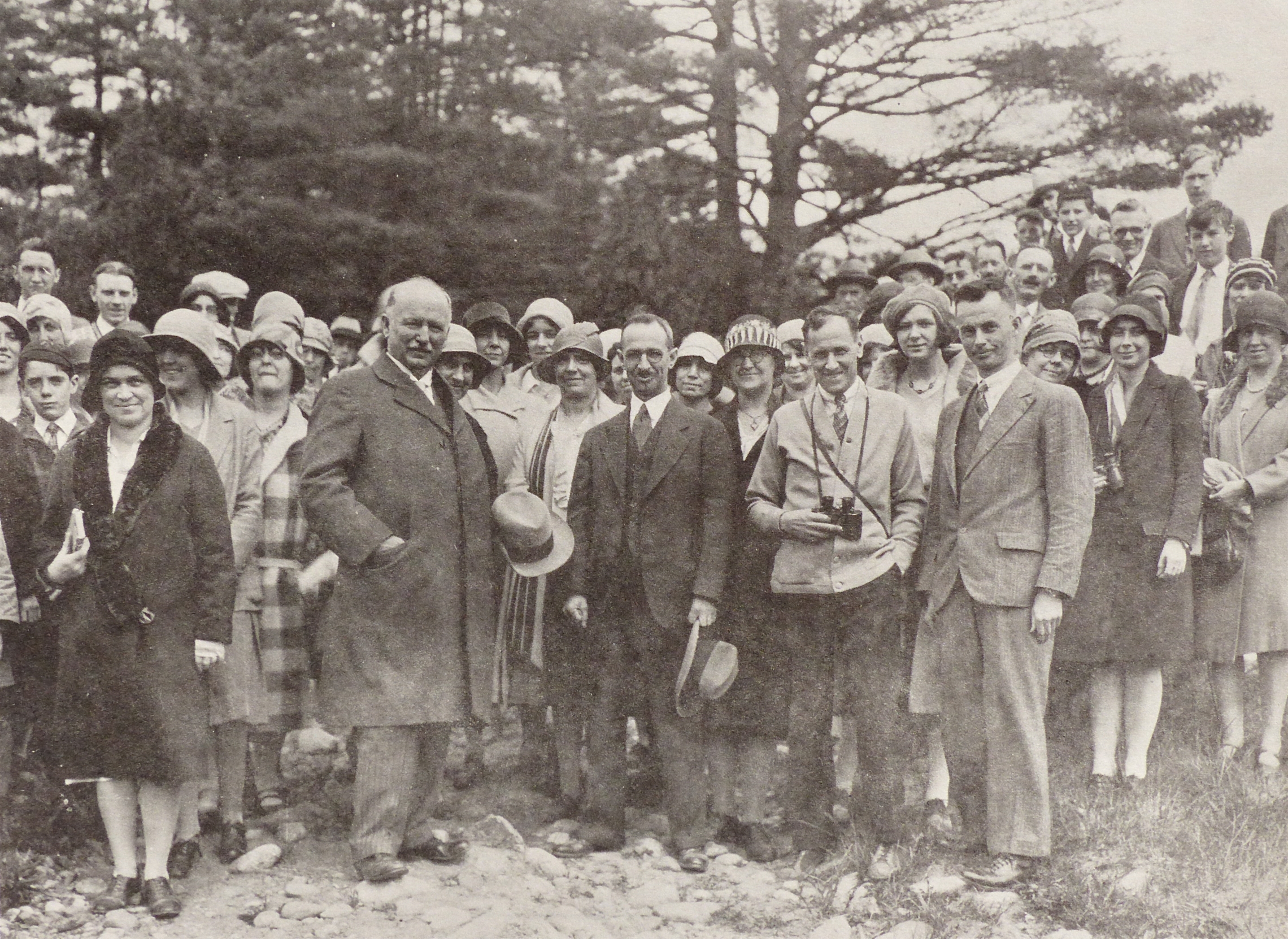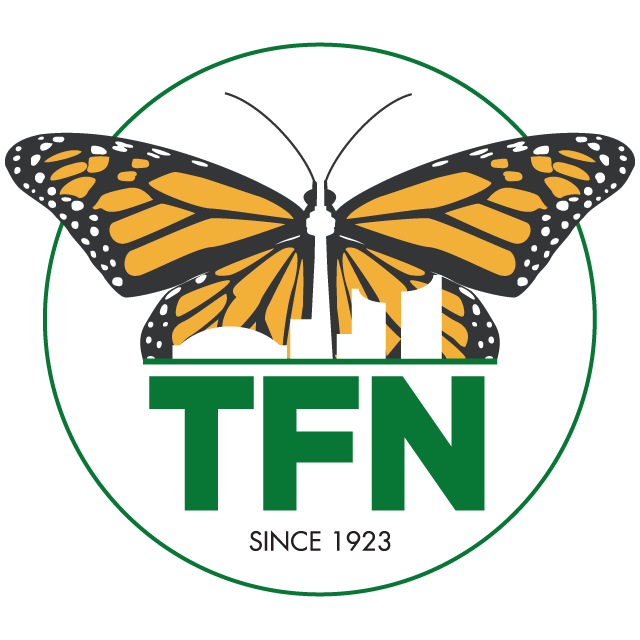Our Mission: Toronto Field Naturalists connects people with nature in the Toronto area. We help people understand, enjoy, and protect Toronto’s green spaces and the species that inhabit them.
TFN is a volunteer-run non-profit and a member of the province-wide Ontario Nature network of naturalist organizations. We share the desire to deepen understanding of, and appreciation for, the natural spaces and species needed for health and well-being. We do this through our website, public lecture series, newsletter, stewardship & citizen science initiatives, guided nature walks, and by empowering people to Take Action in ways consistent with our mission. Explore all of the benefits of TFN membership to learn more.
The idea for a “Toronto Field Naturalists’ Club” was conceived of in June, 1923, and officially launched on October 29th of that year. The stated aims of the club remain our mission to this day: To “develop appreciation of the wonders and beauties of Nature”, to “give opportunity for Nature Lovers to meet together” and increase their knowledge of nature, and to work towards the “protection of wild life”.
Regular meetings & lectures were first held in Foresters’ Hall on College Street and, soon after, in the theatre of the Biological Building at the University of Toronto. In October 1936, TFN began to meet at the Royal Ontario Museum. Early lecture topics included “Bird Music” (W. E. Saunders), “Our Bird Friends and How We May Protect Them” (Harrison F. Lewis), and “Our Spring Flora” (Prof. Klugh of Queen’s University) amongst others, and established a tradition that we continue today with our annual program of eight free public lectures, now held on the University of Toronto campus (Victoria College).
Our legacy of walks & outings began on April 26th, 1924 when Stuart Thompson (nephew of E. T. Seton) led a “field trip” from High Park to Old Mill, enjoying the lakeshore and Humber river along the way. By 1930, TFN was spending considerable time advocating for “placing nature trails in public parks”, a passion that saw TFN establish the first urban nature trail in all of Canada, located in Toronto’s Sunnybrook Park, which was opened on June 7th, 1930. Back then, our walk program sported only a few outings a year. By the 1960s this had grown to about 45. Today, TFN hosts some 100+ walks across the city each and every year.
In September, 1938, TFN published its first newsletter – a two-page affair which included, alongside “a variety of observations made during the previous summer”, a recipe for chickadee pudding to be used in winter bird-feeders. Affection for the newsletter was instantaneous and Toronto Field Naturalist quickly became a pillar of the TFN community. Perhaps no time in our history better reflects this than during World War II, when the Wartime Prices and Trade Board authorized ongoing publication despite paper shortages, and copies were delivered to members on active service abroad, some issues even featuring nature observations made near military camps and at the front. The newsletter is still published to this day, and is considered one of the most treasured benefits of membership by many of our members.
Connecting youth with nature has been an integral part of our organization since its founding. Bird-house building contests were a mainstay in the early years, and other activities included a popular essay contest on “The Conservation of Wild Flowers” run with the Toronto Board of Education in 1931. A young Dr. J. Murray Speirs (after whom the TRCA’s ecological preserve in Altona Forest is named) became the first president of the Junior Club in 1934. Robert Bateman, one of Canada’s best-known painters, was a member in his youth and later became an instructor. He was quoted as saying “it helped to form my heart and mind and soul,” an inspiring testimony to the impact of this venerable TFN initiative. Presently, our Junior Naturalists (ages 6 to 14) meet monthly to explore Toronto’s urban wilds together, and share an online program that features fascinating nature videos, downloadable brain teasers, printable nature scavenger hunt sheets, and much more.
At its core, however, TFN is a conservation organization. The protection and restoration of nature is a driving force behind all that we do. Our current stewardship work is part of a continuum stretching back to our earliest years when we issued a proposal to the then Commissioner of Parks to encourage “the growth of thickets for nesting” and “the planting of berry-bearing shrubs”. Our commitment to citizen science gave rise to Toronto’s first bird checklist, a series of ravine studies in the 1970s, and to our present-day Cottonwood Flats Monitoring Project. Serving as a voice for nature, we’ve played some small role in influencing a variety of policies and initiatives, ranging from Toronto’s recent Ravine and Biodiversity Strategies all the way back to the declaration of Point Pelee as a wild life sanctuary. Now, perhaps more than ever, TFN recognizes the vital importance of action and advocacy in protecting our natural world, and views our ability to empower our members in this regard as one of our most serious responsibilities.
We invite you to join us. If you’re not sure we’re right for you, come on a walk or attend a talk at no cost. Bring a friend. We want more people to discover the joy of nature in Toronto!

